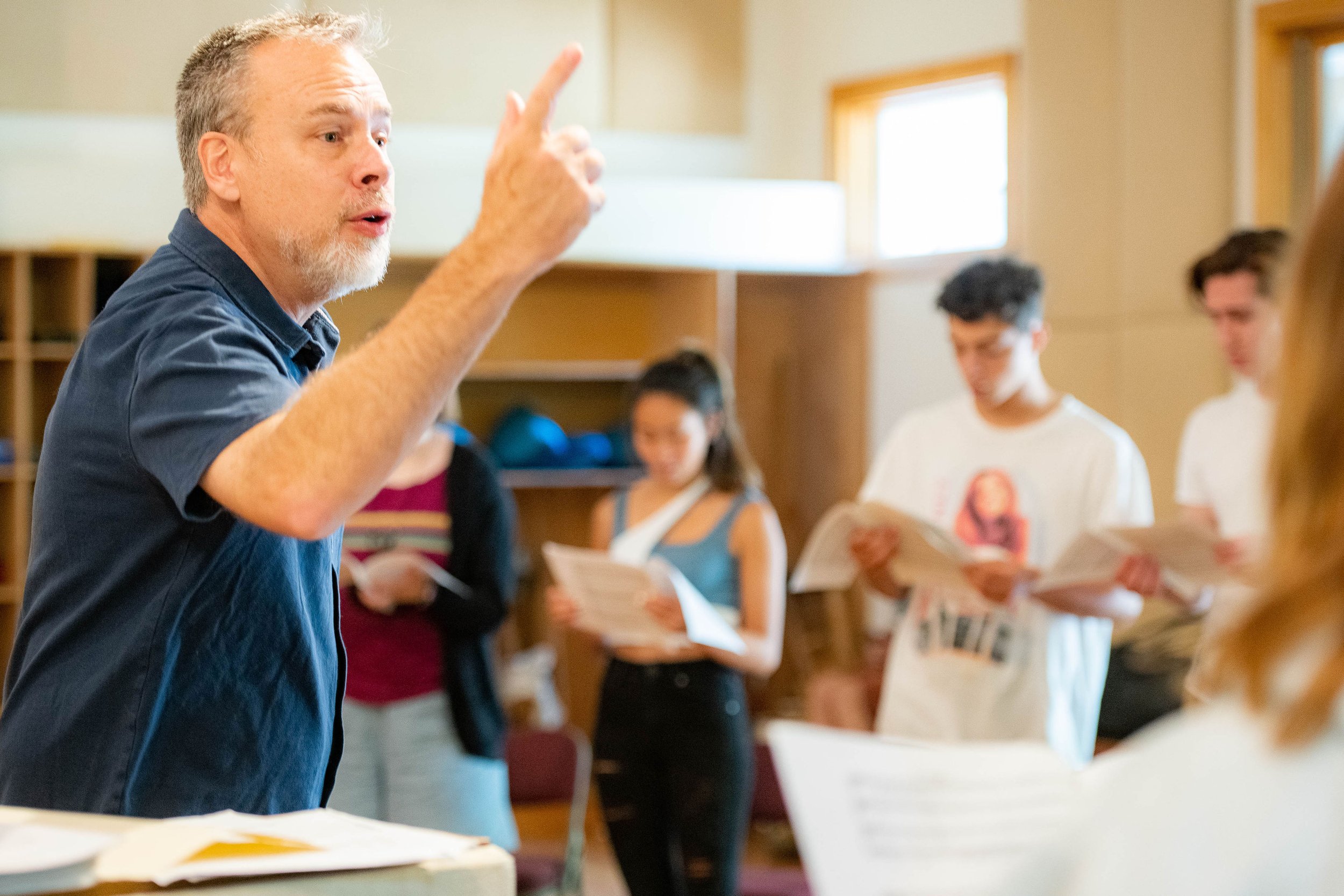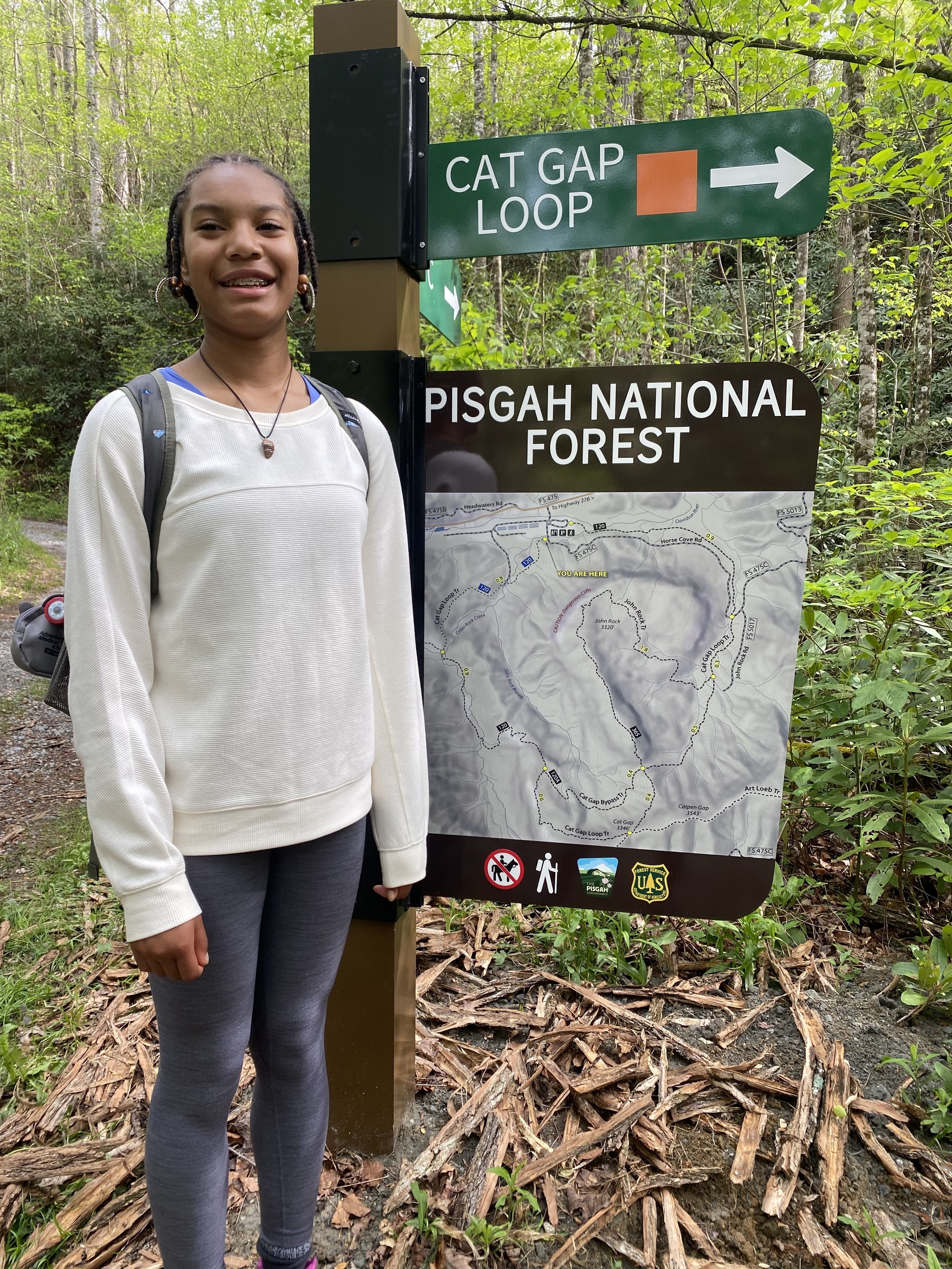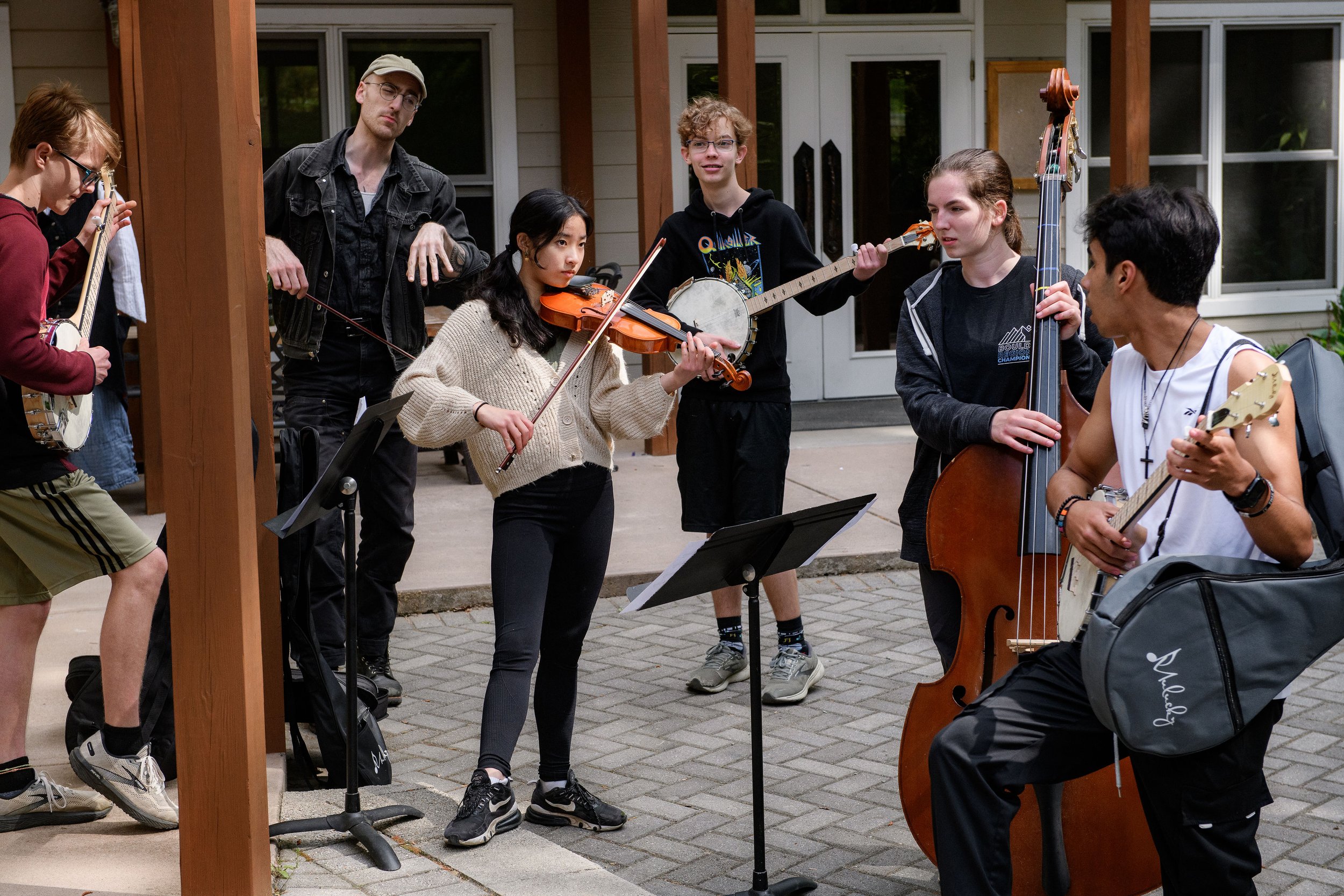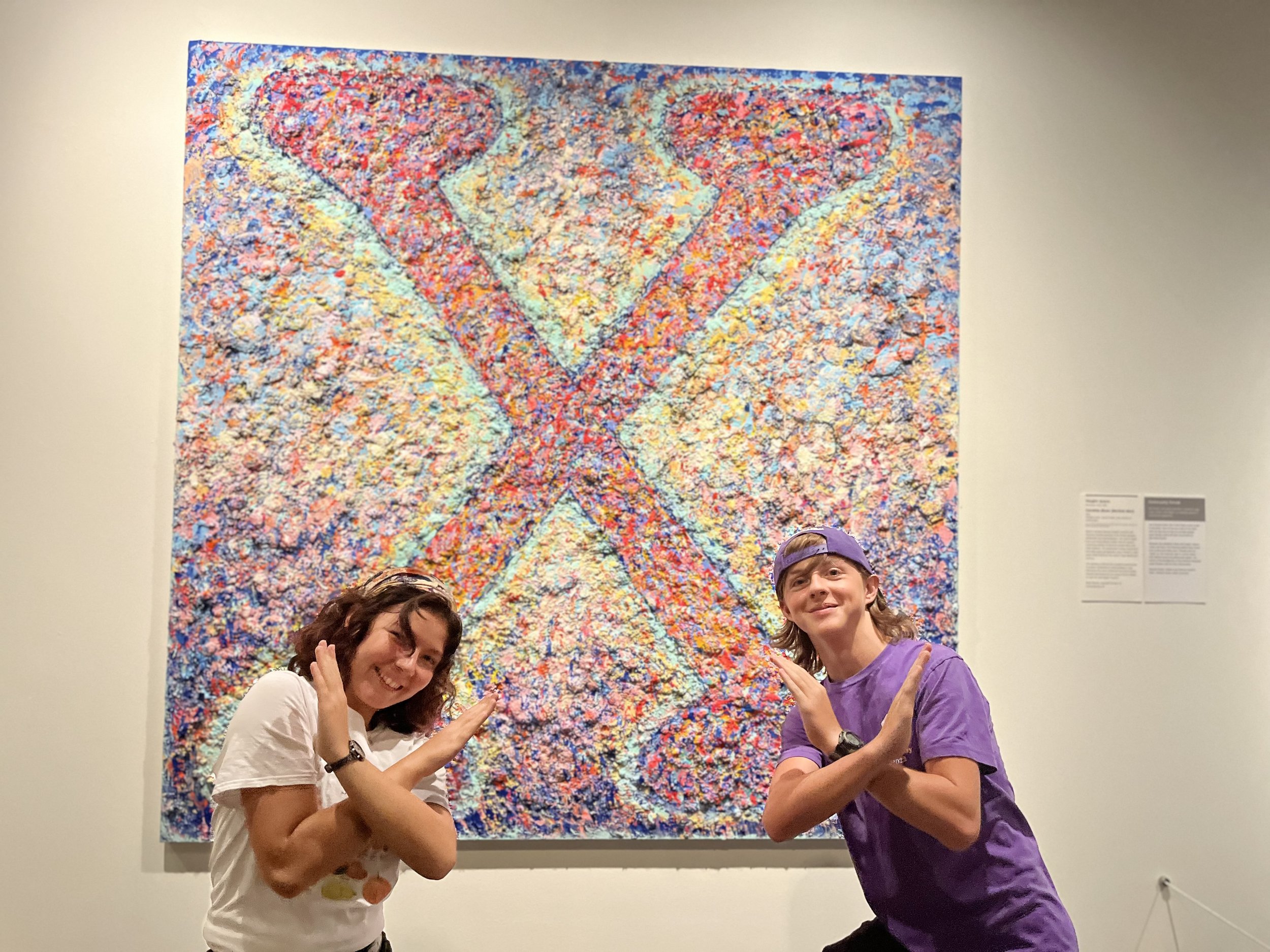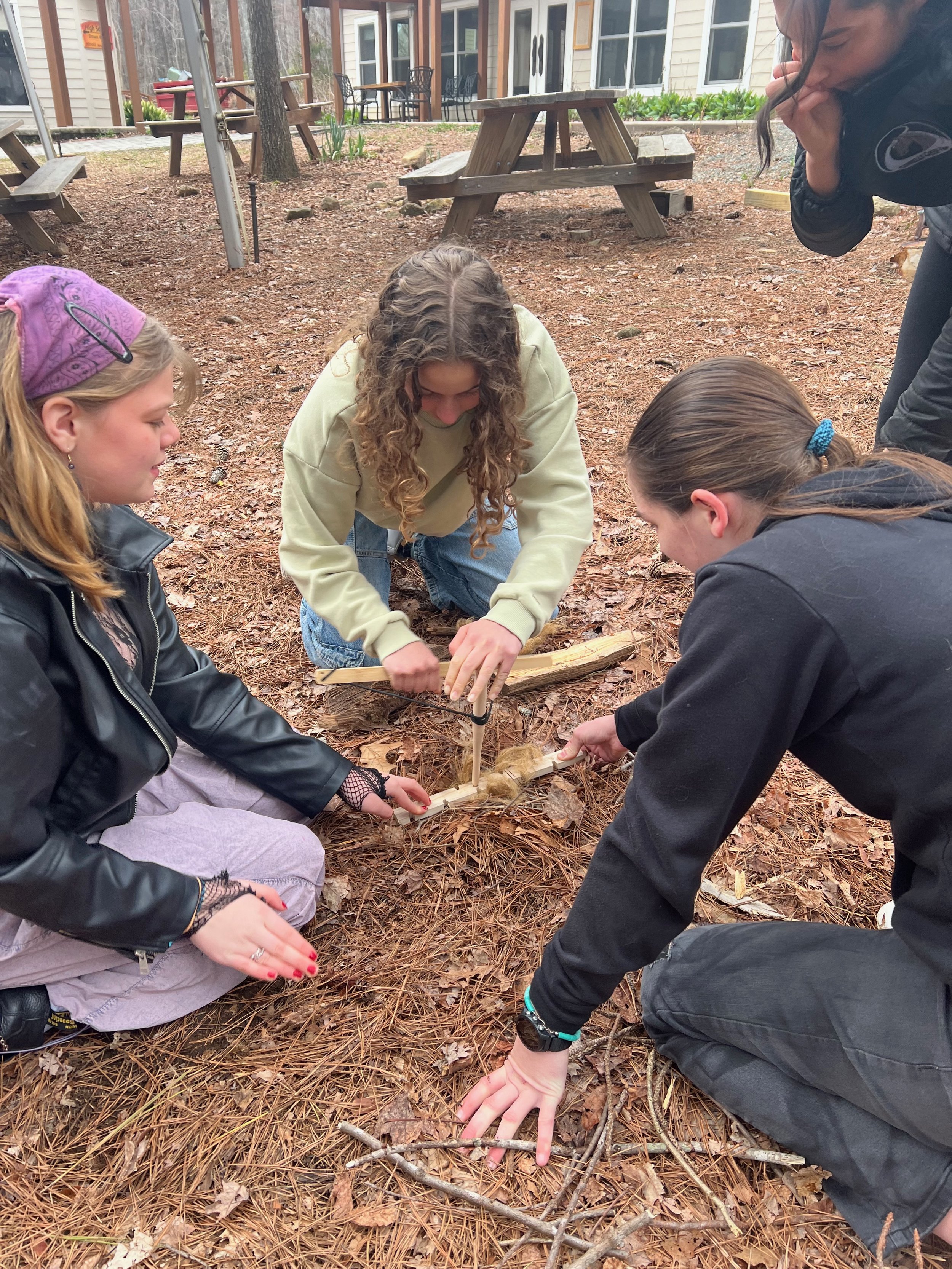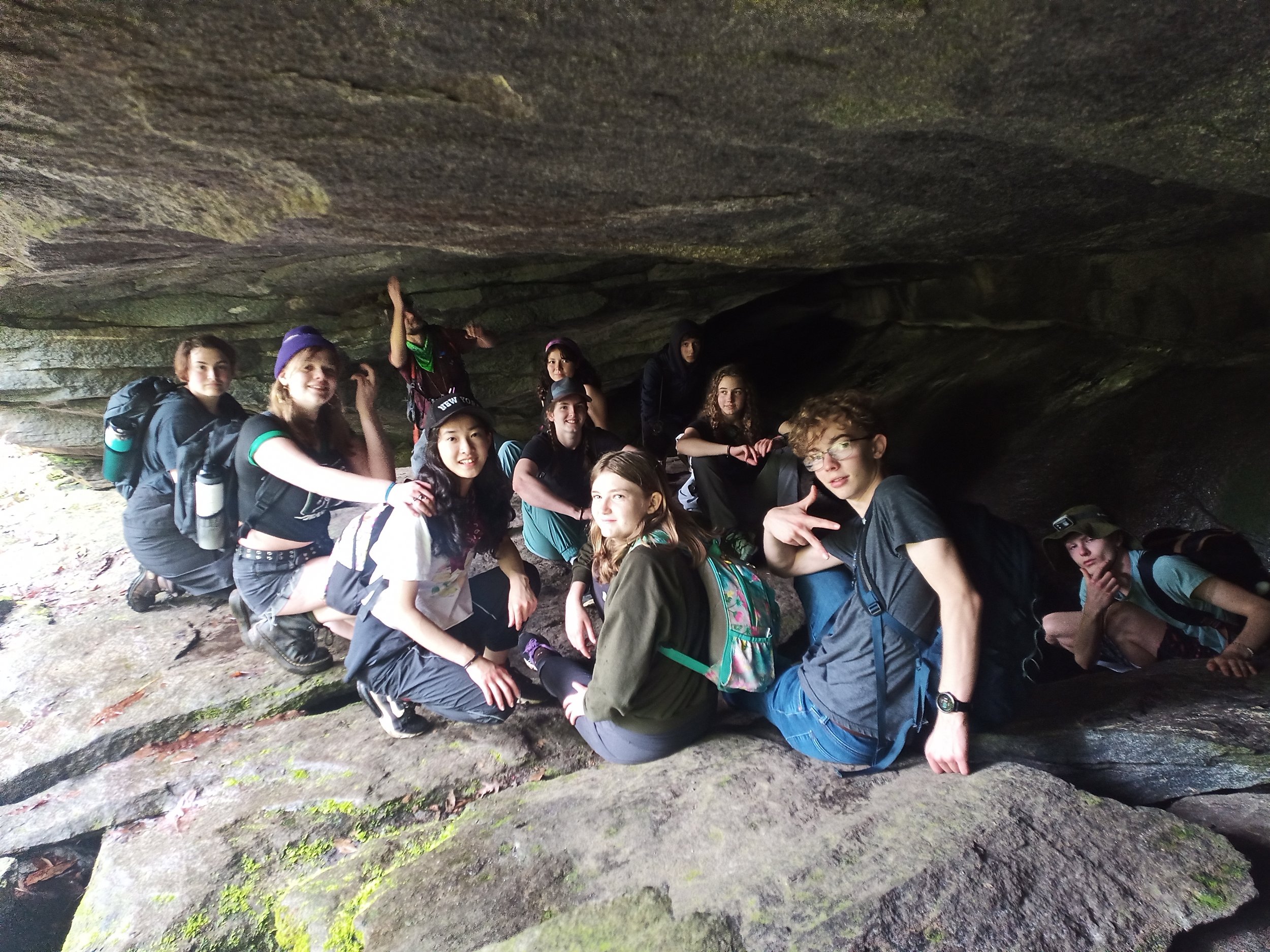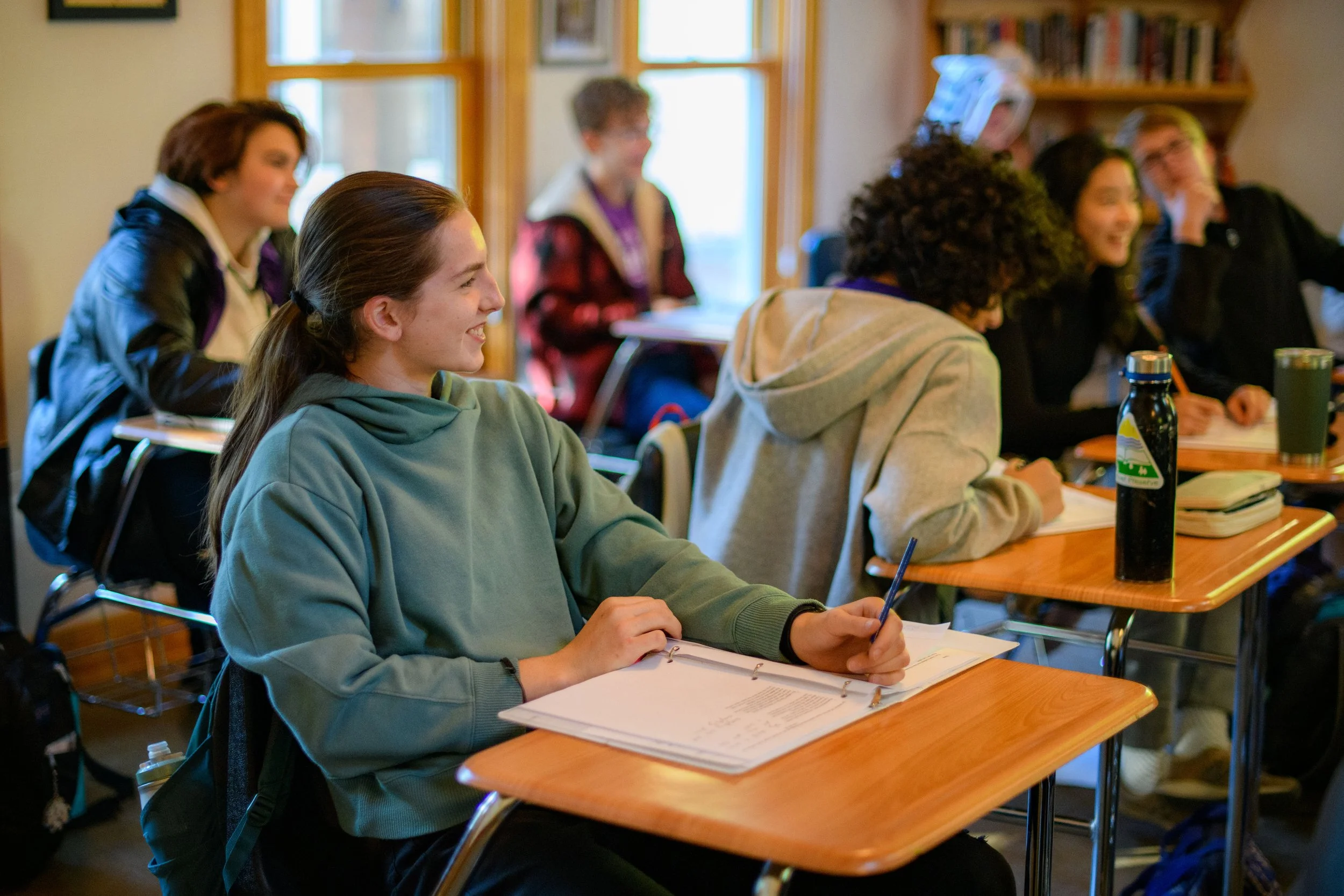
High School Curriculum
Emerson Waldorf High School provides a curriculum that intentionally addresses the developmental stages of adolescents in each grade, while balancing academic rigor with artistic discernment, ecological thinking, and practical skills. Specifically, both the instructional approach and the curriculum assist students in developing their ability to engage with complexity and interconnectedness in the world around them and to create meaning and change in their environment.
Our academic calendar includes rotating main lesson blocks as well as year-long or semester-long track classes. Main lesson blocks, such as Thermal Physics or Transcendentalism, allow students to work immersively in a single subject area daily over the course of a month, through discussion, careful observation, hands-on investigation, and the use of primary text and classical or modern source readings. Academic track classes, such as Math, English, History, or Spanish allow students to build skills and comprehension through consistent engagement with course content throughout a semester or academic year. In addition to these academic classes, all students participate in fine arts, choral or instrumental music, visual and practical arts, and movement.
In the Waldorf high school curriculum, subjects that are traditionally taught in a single year, such as Biology in 9th grade or Chemistry in 10th grade, are distributed throughout all four grades. This allows students to consistently encounter those subjects as they move through the high school curriculum and to expand upon the previous years’ material with newly developed thinking capacities. In addition to this vertical progression, the curriculum also features horizontal integration within a particular grade, so that students can make connections across subjects through their own experiences in each class.
-
Main Lesson Blocks
Comedy and Tragedy
Study of Art
Colonial History
Probability
Descriptive Geometry
Human Biology I
Thermal Physics
Organic Chemistry
Academic Track Courses
English I
Math I
US History I
Spanish I
Geology
Climatology
-
Main Lesson Blocks
The Odyssey
Poetry
Sophomore Class Play
Ancient China
Trigonometry and Surveying
Conics
Human Biology II & Embryology
Mechanics
Academic Track Courses
English II
Math II
Spanish II
US Government
Inorganic Chemistry
-
Main Lesson Blocks
Dante
World History
History through Music
Projective Geometry
Botany
Cell Biology
Electricity and Magnetism
Atomic Chemistry
Academic Track Courses
English III
Math III
Spanish III
US History II
Astronomy
-
Main Lesson Blocks
Transcendentalism
Senior Class Play
History through Architecture
Zoology
Visual Physics
Ecology
Spirituality and the Senses
Academic Track Courses
English IV
Calculus
World History
Biochemistry
Environmental Justice
-
Photography
Collage
Robotics
World cultures
Poetry
Metalsmithing
and more
-
The study of a language is not just the study of words to communicate; it is the study of culture—including people, places, foods, literature and poetry, traditions, art, music, and songs. Foreign language learning not only exposes students to other peoples’ ways of thinking and feeling, but it also cultivates an inner sense of tolerance and openness to other cultures helping them to become globally attuned.
-
Human development shows that musical engagement is an important complement to academic work, leading students into the flow state immersed in the beauty and creativity of tone. Practice of musical instruments is therapeutic and activates dexterity in the fingers, subtlety and power in breathing. Music both calms the nervous system and invigorates the nervous system, allowing for more informational learning to be ‘digested’ more deeply. As most students are commonly listening to recorded music at home, it is vital that they engage music as a creative experience at school, and so we require all students to participate at varying levels of skill in our program.
-
Every high school student participates in a sequence of Visual Arts classes designed to develop skills and gain insight into their own creative capacities. By refining their technical skills, intellectual understanding of material and forms, and becoming acquainted with history and practice, students develop a strong relationship to their own creative process and experience themselves as artistically capable in a variety of media. Drawing, painting, sculpture and a variety of crafts rooted in local tradition facilitate student dialogue with materials that also align with particular developmental stages.
-
Accompanied by two faculty sponsors, each class travels as a group on a week-long curriculum trip in the month of May. These trips correlate with both a main lesson block and the theme of the class year. Ninth graders participate in a week long service learning experience at communities such as Innisfree Village in Virginia or Camp Hill in Pennsylvania, the tenth grade class heads to the coast to go sailing in conjunction with their Odyssey block and 11th graders work with bees at Spikenard Farms to complement their botany block. 12th grade students bookend their year with two week long trips; the fall trip has a zoology focus and the spring trip is typically service oriented.
-
Emerson Waldorf High School students have the unique opportunity to experience another culture while continuing their Waldorf education by studying abroad. There is no fee to attend another Waldorf high school when students from two schools agree to an educational exchange. Students can attend another Waldorf school for three weeks up to a full semester. With Waldorf schools on six continents, students can study in the country of their choice!
-
Each school year begins with a three-day retreat, during which the students participate in a visioning process for the school year.
-
High school clubs are student-led and organized. Clubs that have been created include the Student Service Club, Robotics Club, Sustainability Club, Music Club, Punk and Junk, Poetry Club, and Cheese Church.

